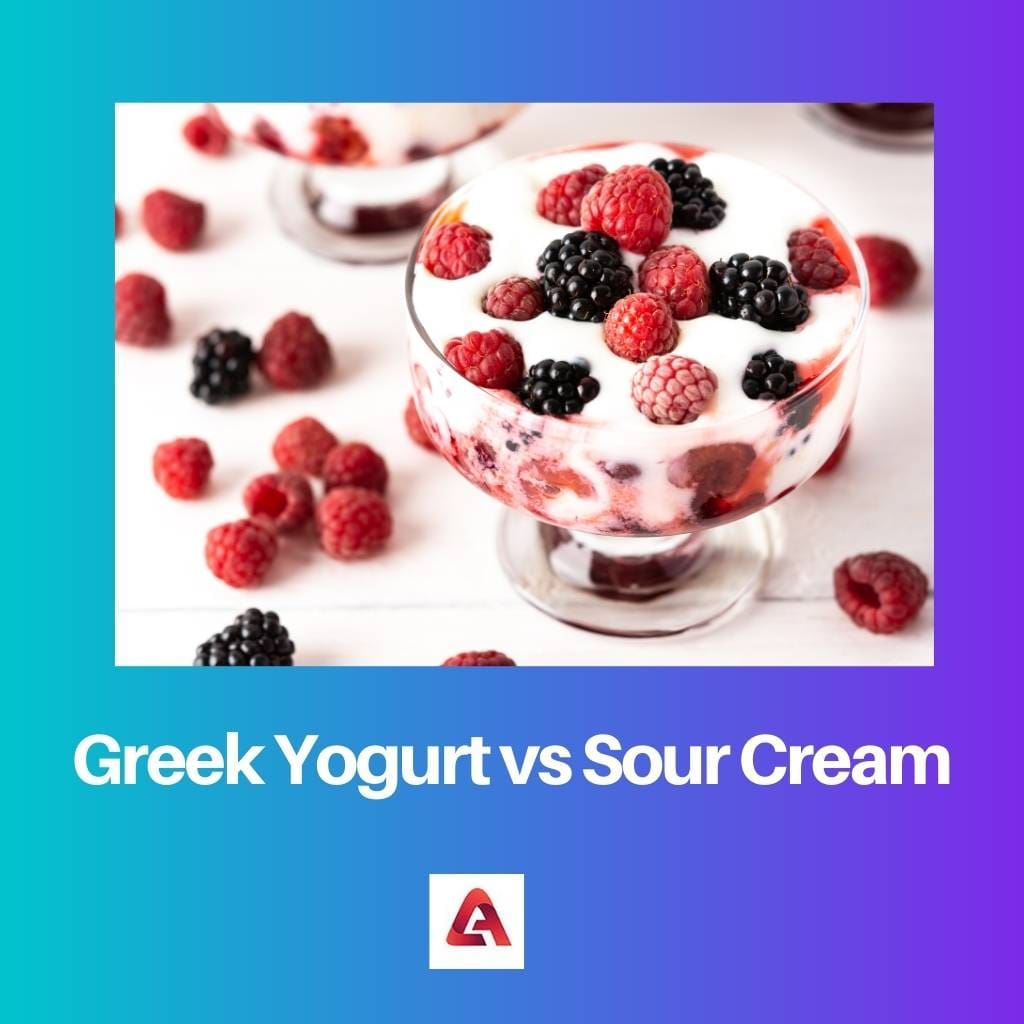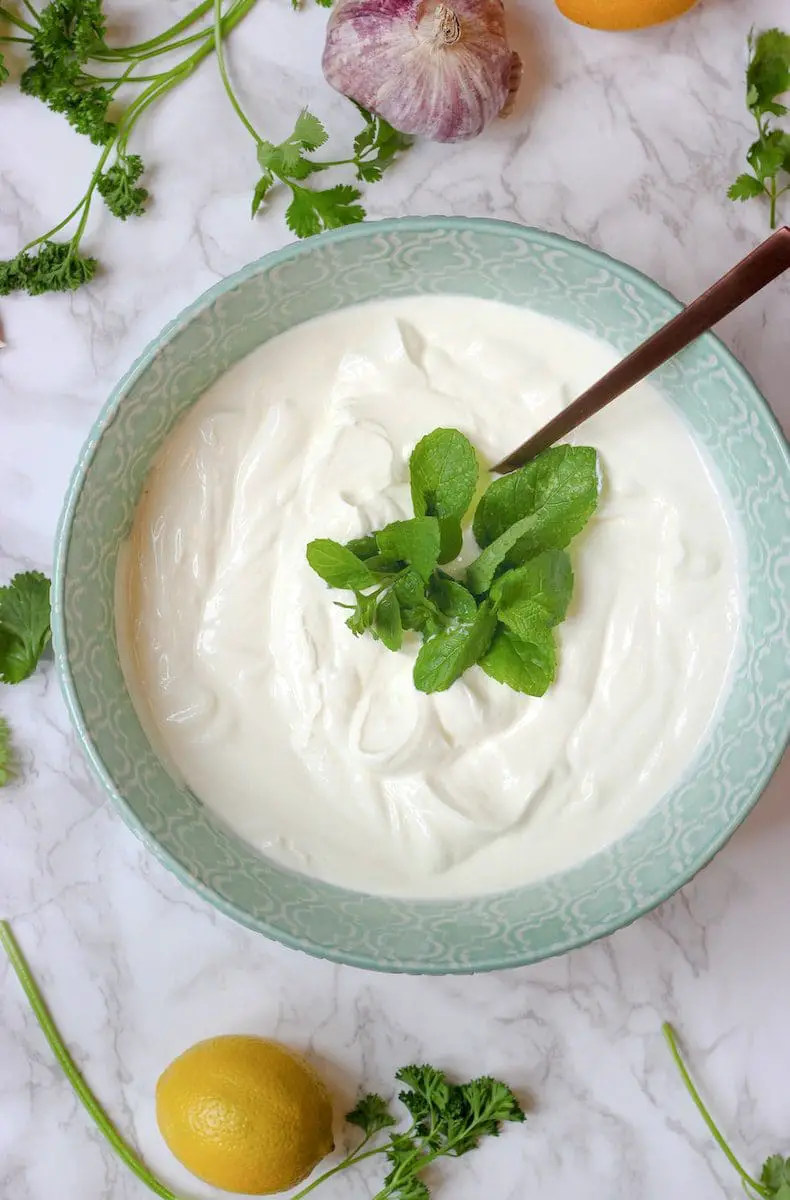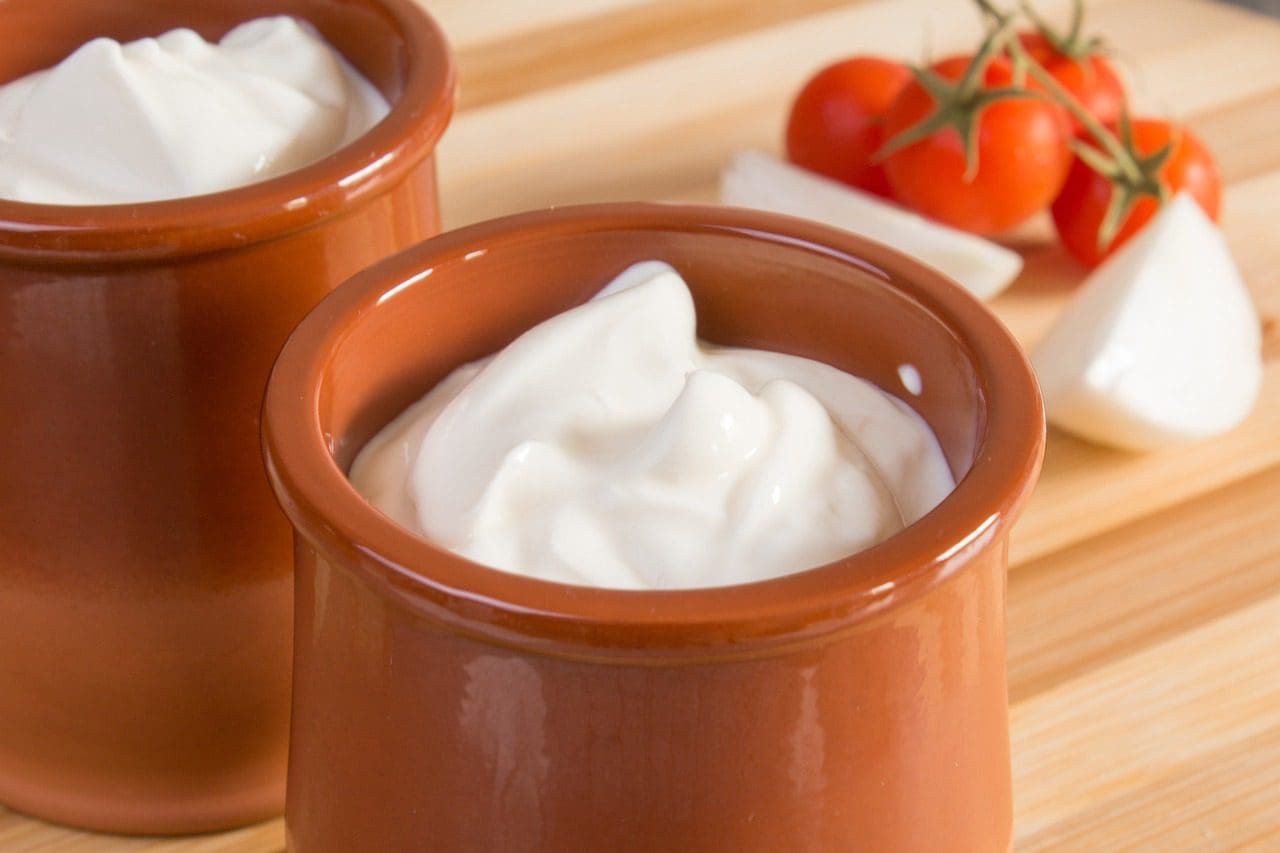Greek yogurt and sour cream look very similar to each other. Both of these are milk products and are formed with the involvement of some kind of bacteria.
These are also used as substitutes for each other as they have a similar tangy taste and are of soft, creamy texture. They both are both filled with moisture.
Key Takeaways
- Greek yogurt is a strained yogurt with a thick consistency and tangy taste, while sour cream is a dairy product made by fermenting cream with lactic acid bacteria.
- Greek yogurt is higher in protein and lower in fat compared to sour cream.
- Sour cream is commonly used as a topping for baked potatoes and Mexican dishes, while Greek yogurt is used in dips, dressings, and smoothies.
Greek Yogurt vs Sour Cream
Greek yogurt is a type of yogurt that is strained to remove the liquid whey and lactose, resulting in a thicker and creamier texture than regular yogurt. It has a tangy flavor. Sour cream is made by fermenting cream with lactic acid bacteria, which gives it a tangy and slightly acidic taste. It has a creamy texture and is commonly used as a topping.

Greek yogurt is fluffy and soft in texture. It is made using the same process that is used to make regular yogurt.
The process involves the fermentation of milk using bacterial action on the milk. Further, the milk turns semi-solid when the excess liquid is passed through a cloth.
Sour cream is thick in texture and smelling and tangy in taste. It is an important ingredient in several types of food and bakery items. Sour cream is made by the fermentation of cream, which is itself a milk product. Cultured buttermilk and salt are added to the cream.
The cream is then left for 20 to 40 hours until its starts tasting sour.
Comparison Table
| Parameters of Comparison | Greek Yogurt | Sour Cream |
|---|---|---|
| Texture | It is soft and watery. | It is thick and creamy. |
| Healthy | It is more healthy compared to sour cream. | It is less healthy compared to Greek Yogurt. |
| Formation | It is made by fermentation of milk. | It is made by fermentation of cream. |
| Calories | It has about 133 calories per 100 grams. | It has about 214 calories per 100 grams. |
| Used in | It can be eaten along with fruits, granola, etc. | It can be used as a spread or dip. |
What is Greek Yogurt?
Greek yogurt is a popular type of yogurt. Greek yogurt has a thick consistency and is less sweet compared to other types of yogurt.
Though making Greek yogurt or any general yogurt remains the same, there are additional steps in making Greek yogurt that provides it with a thick consistency, unlike regular yogurt.
Firstly the milk is fermented to change the lactose in milk to lactic acid. The bacteria used for its fermentation are Streptococcus thermophiles and Lactobacillus bulgaricus.
These bacteria help in the coagulation of milk. Further, this mixture is passed through a mesh cloth, and the excess liquid is separated from the coagulated milk.
This process is traditionally repeated three times to give the yogurt a thick consistency, and this is the process that separates Greek yogurt from any regular yogurt.
Greek yogurt hence requires more milk than regular yogurts. Greek yogurt is famous for its fluffy and soft texture. Nowadays, it is in high demand among health-conscious people as it has several health benefits and is less in calories. On average, 100 grams of Greek yogurt has 133 calories.
It consists of protein, calcium, iodine, and potassium. It has less sugar and carbohydrates compared to regular sugar. Also, a small serving of Greek yogurt is very filling, and this can hence help in weight loss.

What is Sour Cream?
Sour cream has a smooth, creamy texture. It is a tangy and creamy taste. The process of making sour cream involves mixing cream with vinegar or lemon juice. Further, buttermilk or whole milk is added to the mixture.
The mixture is covered with cheesecloth and is left uninterrupted for about 1 to 2 days at room temperature. The mixture is ready to serve when it starts smelling and tasting sour.
Sour cream can also be stored in the refrigerator for future use. This is the process by which sour cream can be made at home. However, one can easily find sour creams at local markets and shops.
These ready-to-eat sour creams contain preservatives and use unnatural bacterial growth for their formation.
100 grams of sour cream consists of 214 calories. Sour cream is used as a condiment for several dishes. It is also used as a dip or spread. It is used as a dip with crackers, chips, nachos, etc. It is used as a spread in tacos, burritos, rolls, etc.
It is an important ingredient in many bakery items like cakes, pastries, and cookies. It gives a little sour taste and fluffy texture to cakes. Sour cream consists of carbs, protein, and fats.

Main Differences Between Greek Yogurt and Sour Cream
- Greek yogurt is fluffy and has a moisture content, whereas sour cream is creamy and thick.
- Greek yogurt is less in fat compared to sour cream.
- Greek yogurt is made by the fermentation of milk, whereas sour cream is made by the fermentation of cream.
- Greek yogurt is way healthier than sour cream.
- 100 grams of Greek yogurt has 133 calories, whereas 100 grams of sour cream has about 214 calories.




